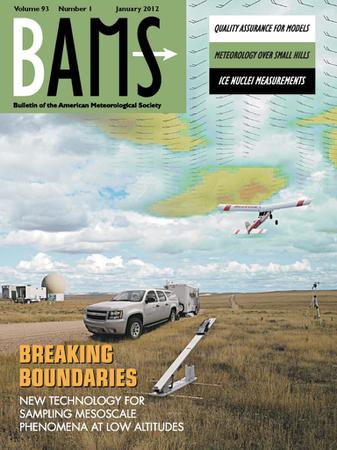The Tree-crop Remote sensing of Evapotranspiration eXperiment (T-REX): A science-based path for sustainable water management and climate resilience
IF 5.9
1区 地球科学
Q1 METEOROLOGY & ATMOSPHERIC SCIENCES
引用次数: 0
Abstract
Abstract Water scarcity threatens agriculture in California. During the last two decades, historically severe droughts have led to severe water shortages. Under projected changes in climate, droughts of greater severity and duration will exacerbate this situation. California produces 80% of the world’s almonds, which require consistent water supplies for irrigation. Almonds are the most commonly grown crop in California, covering nearly 1.4 million acres over about 8,000 farms. In response to these challenges, almond growers are considering a myriad of management strategies to save water and mitigate climate change. The Tree-crop Remote sensing of Evapotranspiration eXperiment (T-REX) aims to identify water and orchard management opportunities to maximize water use efficiency and carbon sequestration in almonds and other woody perennial tree crops. The project combines satellite, uncrewed aerial vehicles, and proximal sensing technologies to retrieve key variables used to model surface fluxes and biophysical properties. We aim to advance our understanding of water management and cultural practices on water-carbon relationships in tree-perennial agroecosystems. Through new methods, such as Evapotranspiration-based irrigation scheduling, even a modest 10% decrease in almond orchard irrigation across the state equates to about a third of the water in Lake Oroville, California’s second-largest reservoir, at average levels. From a carbon perspective, almond orchards could sequester 8% of the state’s current greenhouse gas emissions by transitioning toward climate-smart practices. As such, the almond industry is uniquely positioned to curb water-use and contribute to climate change mitigation while maintaining economic viability of almond production. An overview of initial results related to evapotranspiration observational and modeling uncertainty, and carbon sequestration potential are presented in this article.林产作物蒸散发遥感试验(T-REX):可持续水资源管理和气候适应能力的科学路径
水资源短缺威胁着加州的农业。在过去的二十年里,历史上严重的干旱导致了严重的水资源短缺。根据预测的气候变化,更严重和持续时间更长的干旱将加剧这种情况。加州生产了世界上80%的杏仁,这需要持续的灌溉用水。杏仁是加州最常见的作物,在大约8000个农场中占地近140万英亩。为了应对这些挑战,杏仁种植者正在考虑各种管理策略来节约用水和减缓气候变化。tree -crop遥感蒸散试验(T-REX)旨在识别水分和果园管理机会,以最大限度地提高杏仁和其他多年生木本树木作物的水分利用效率和碳固存。该项目结合了卫星、无人驾驶飞行器和近端传感技术,以检索用于模拟地表通量和生物物理特性的关键变量。我们的目标是提高我们对水管理和文化实践的理解,在多年生农业生态系统中的水-碳关系。通过新的方法,比如基于蒸散作用的灌溉计划,即使全州杏树果园灌溉减少10%,也相当于加州第二大水库奥罗维尔湖平均水位的三分之一左右。从碳排放的角度来看,通过向气候智能型实践过渡,杏仁园可以吸收该州目前8%的温室气体排放量。因此,杏仁产业具有独特的优势,可以在保持杏仁生产的经济可行性的同时,遏制水的使用,为减缓气候变化做出贡献。本文概述了与蒸散发观测和模拟不确定性以及碳固存潜力相关的初步结果。
本文章由计算机程序翻译,如有差异,请以英文原文为准。
求助全文
约1分钟内获得全文
求助全文
来源期刊
CiteScore
9.80
自引率
6.20%
发文量
231
审稿时长
6-12 weeks
期刊介绍:
The Bulletin of the American Meteorological Society (BAMS) is the flagship magazine of AMS and publishes articles of interest and significance for the weather, water, and climate community as well as news, editorials, and reviews for AMS members.

 求助内容:
求助内容: 应助结果提醒方式:
应助结果提醒方式:


